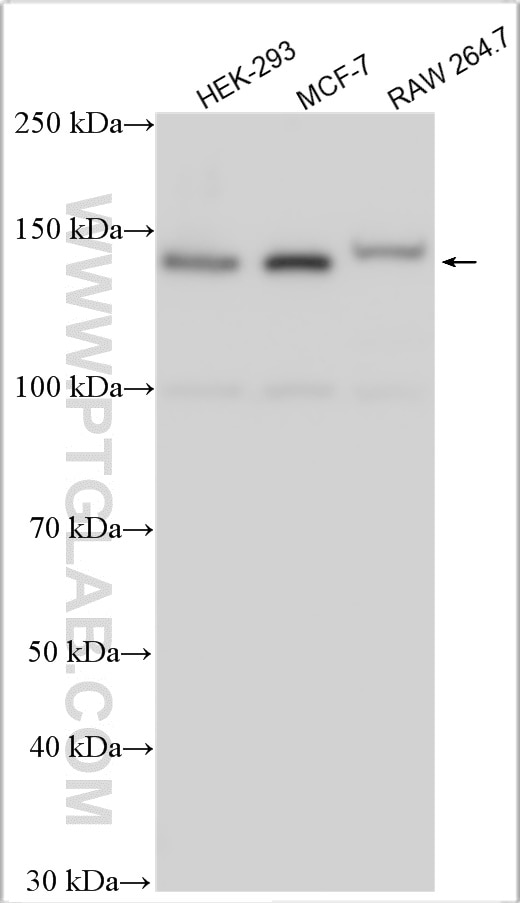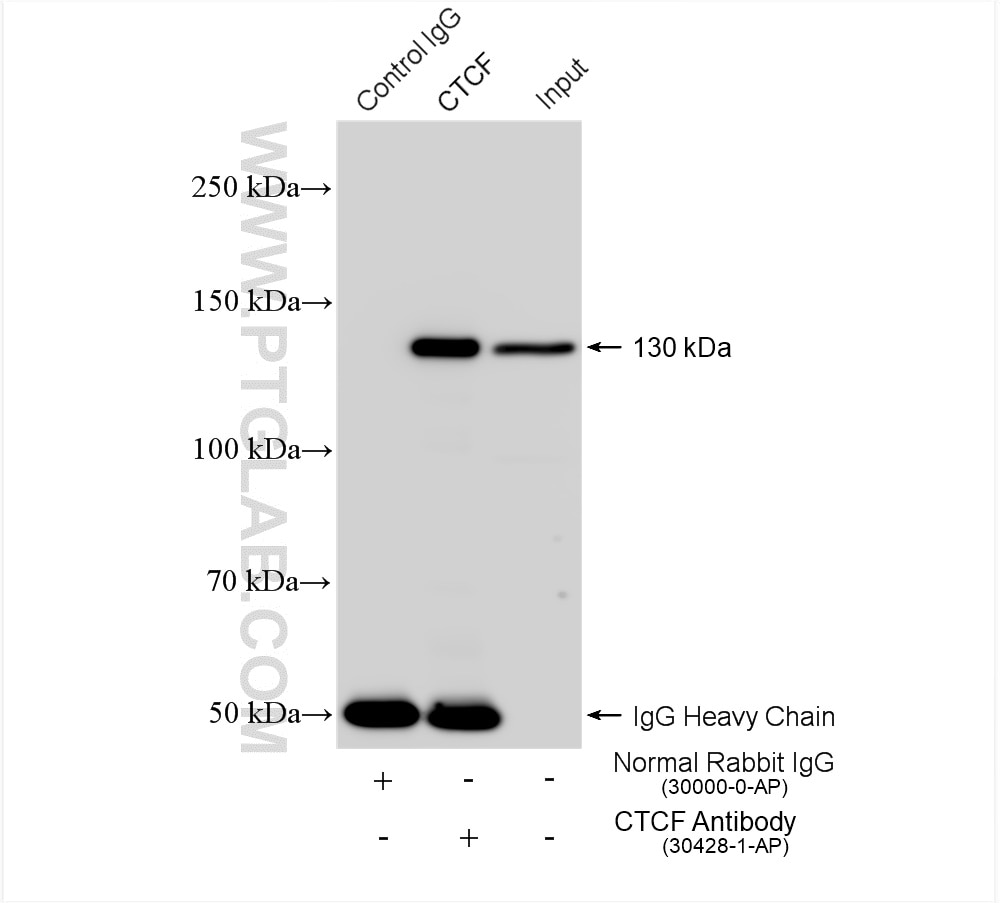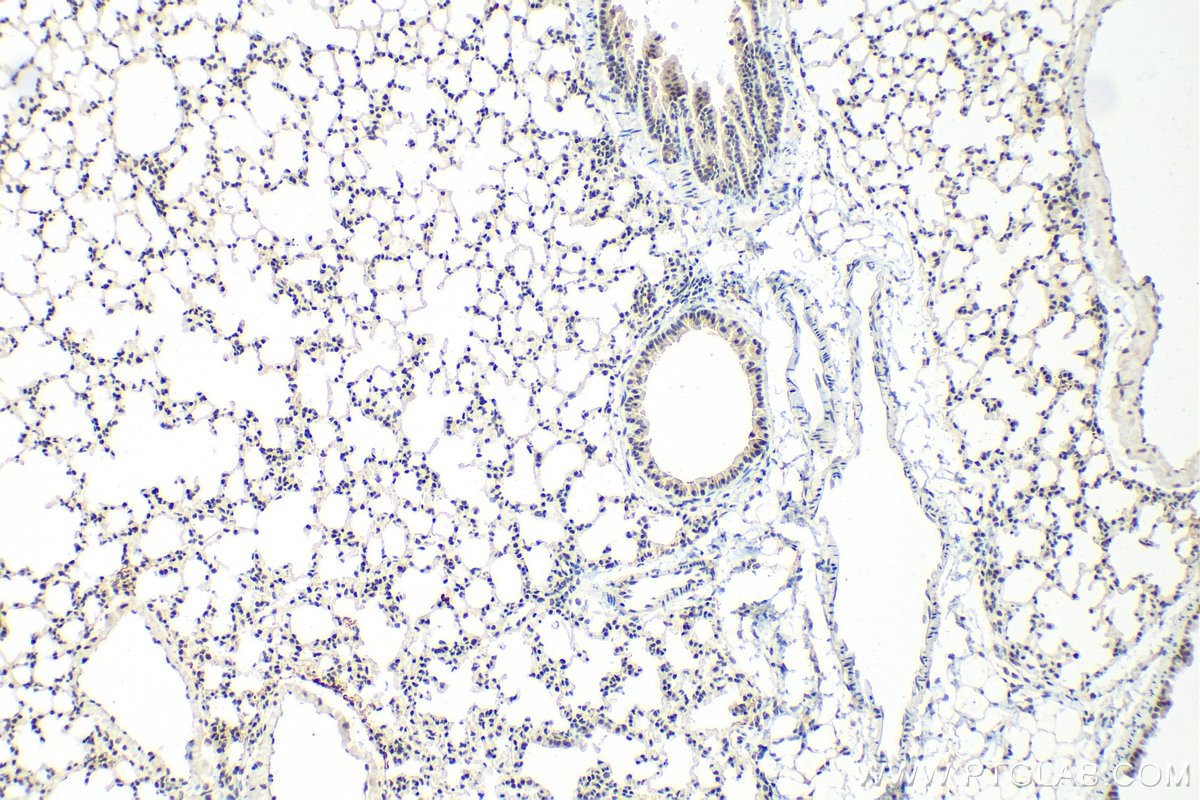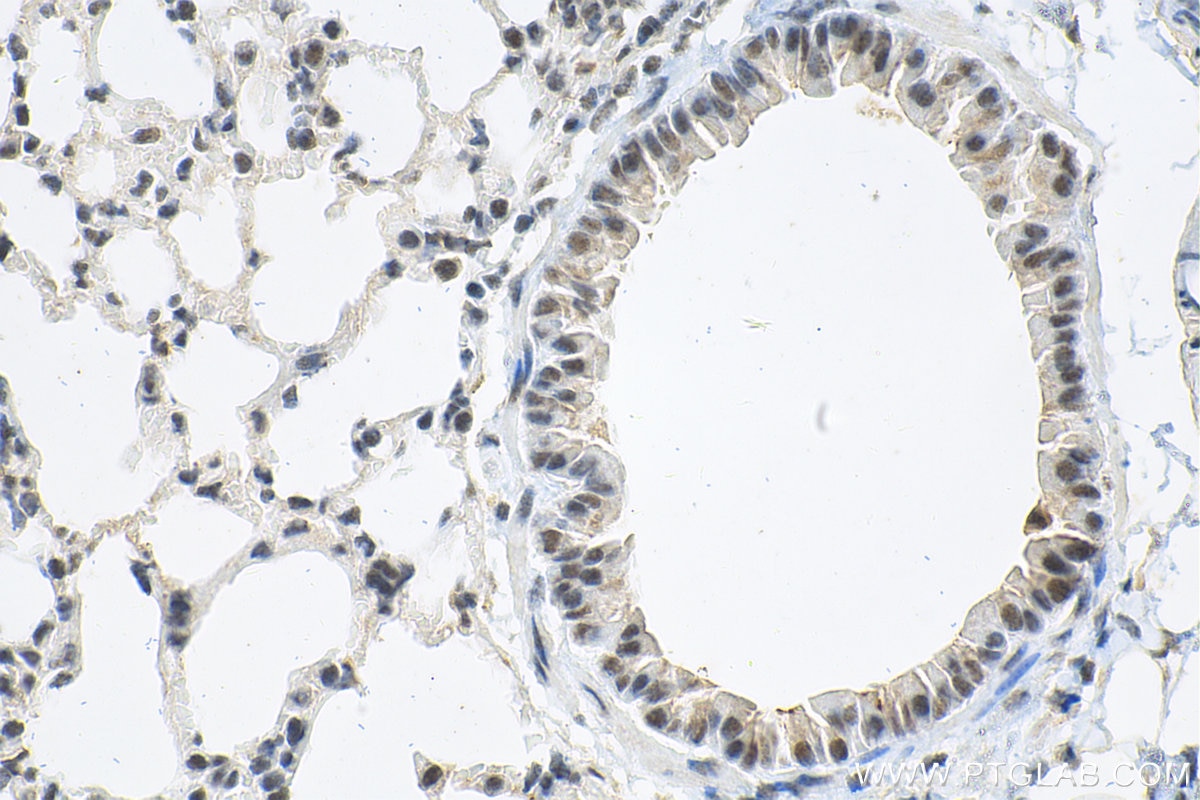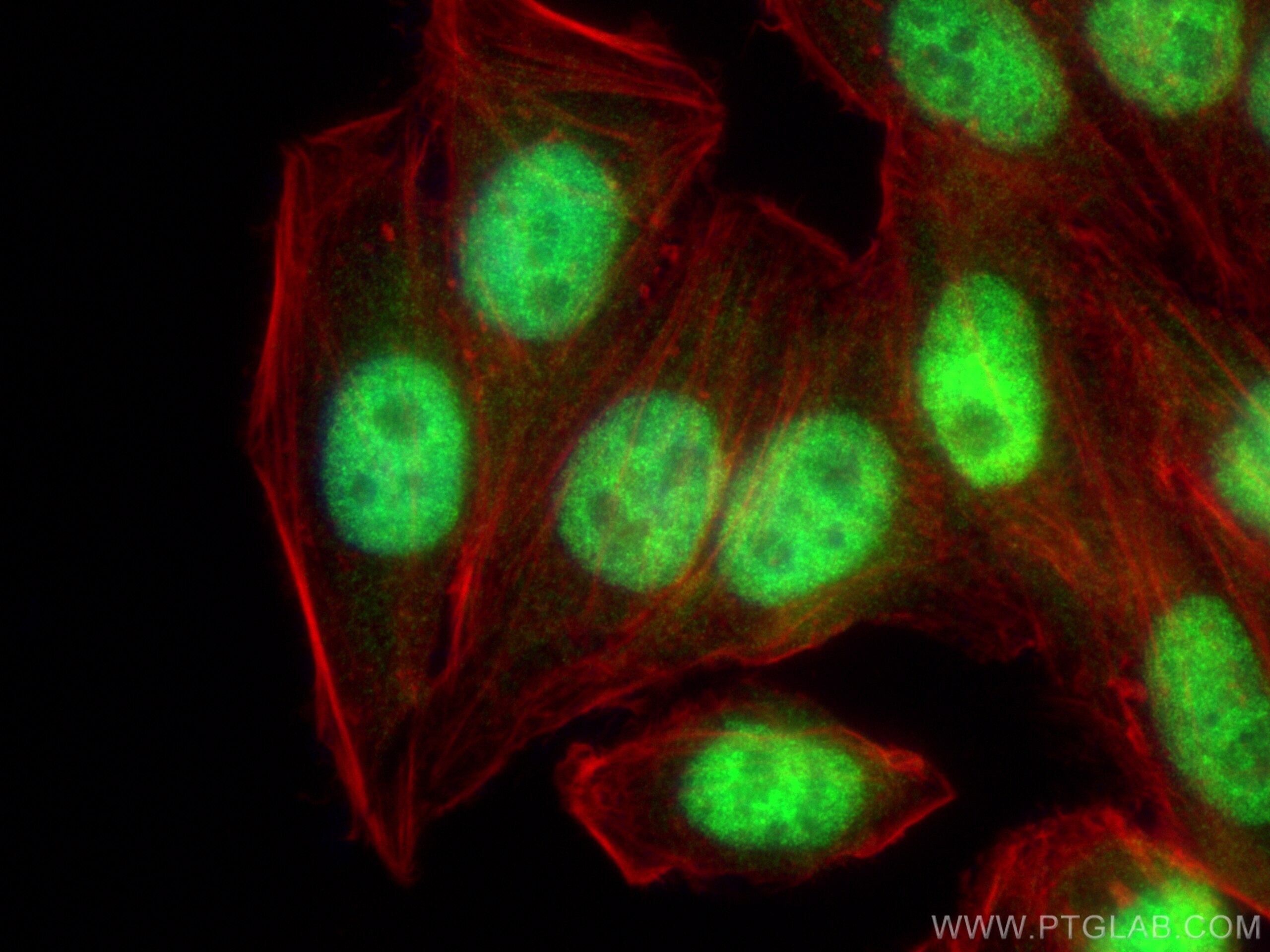Anticorps Polyclonal de lapin anti-CTCF
CTCF Polyclonal Antibody for WB, IHC, IF/ICC, IP, ELISA
Hôte / Isotype
Lapin / IgG
Réactivité testée
Humain, souris
Applications
WB, IHC, IF/ICC, IP, ELISA
Conjugaison
Non conjugué
N° de cat : 30428-1-AP
Synonymes
Galerie de données de validation
Applications testées
| Résultats positifs en WB | cellules HEK-293, cellules MCF-7, cellules RAW 264.7 |
| Résultats positifs en IP | cellules MCF-7, |
| Résultats positifs en IHC | tissu pulmonaire de souris, il est suggéré de démasquer l'antigène avec un tampon de TE buffer pH 9.0; (*) À défaut, 'le démasquage de l'antigène peut être 'effectué avec un tampon citrate pH 6,0. |
| Résultats positifs en IF/ICC | cellules HepG2, |
Dilution recommandée
| Application | Dilution |
|---|---|
| Western Blot (WB) | WB : 1:2000-1:16000 |
| Immunoprécipitation (IP) | IP : 0.5-4.0 ug for 1.0-3.0 mg of total protein lysate |
| Immunohistochimie (IHC) | IHC : 1:400-1:1600 |
| Immunofluorescence (IF)/ICC | IF/ICC : 1:800-1:3200 |
| It is recommended that this reagent should be titrated in each testing system to obtain optimal results. | |
| Sample-dependent, check data in validation data gallery | |
Informations sur le produit
30428-1-AP cible CTCF dans les applications de WB, IHC, IF/ICC, IP, ELISA et montre une réactivité avec des échantillons Humain, souris
| Réactivité | Humain, souris |
| Hôte / Isotype | Lapin / IgG |
| Clonalité | Polyclonal |
| Type | Anticorps |
| Immunogène | CTCF Protéine recombinante Ag32417 |
| Nom complet | CCCTC-binding factor (zinc finger protein) |
| Masse moléculaire calculée | 83 kDa |
| Poids moléculaire observé | 110-150 kDa |
| Numéro d’acquisition GenBank | BC014267 |
| Symbole du gène | CTCF |
| Identification du gène (NCBI) | 10664 |
| Conjugaison | Non conjugué |
| Forme | Liquide |
| Méthode de purification | Purification par affinité contre l'antigène |
| Tampon de stockage | PBS with 0.02% sodium azide and 50% glycerol |
| Conditions de stockage | Stocker à -20°C. Stable pendant un an après l'expédition. L'aliquotage n'est pas nécessaire pour le stockage à -20oC Les 20ul contiennent 0,1% de BSA. |
Informations générales
Transcriptional insulators are DNA elements that set boundaries on the actions of enhancer and silencer elements and thereby organize the eukaryotic genome into regulatory domains. All vertebrate insulators appear to use the versatile CTCF protein. CTCF uses various combinations of its 11 zinc fingers to recognize a variety of unrelated DNA sequences. Once bound to DNA, CTCF can function as a transcriptional insulator, repressor, or activator, depending on the context of the binding site [PMID:12787766,15454938]. In vertebrates, this 11 zinc-finger protein is shown to be crucial in processes of epigenetic imprinting, X chromosome inactivation , and associated with various complex human diseases including cancer and diabetes [PMID:23139640]. The calcualted molecular weight of CTCF is 83 kDa, but stimulation of human corneal epithelial cells with hypoxic stress suppressed a high molecular mass form of CTCF (150 kDa), but not a lower molecular weight form of CTCF (130 kDa)(PMID: 22354964), and there are multiple isoforms of CTCF with molecular masses of 55, 70, 73, 80, 97, and 130 kDa have been observed (PMID: 12878173).
Protocole
| Product Specific Protocols | |
|---|---|
| WB protocol for CTCF antibody 30428-1-AP | Download protocol |
| IHC protocol for CTCF antibody 30428-1-AP | Download protocol |
| IF protocol for CTCF antibody 30428-1-AP | Download protocol |
| IP protocol for CTCF antibody 30428-1-AP | Download protocol |
| Standard Protocols | |
|---|---|
| Click here to view our Standard Protocols |
